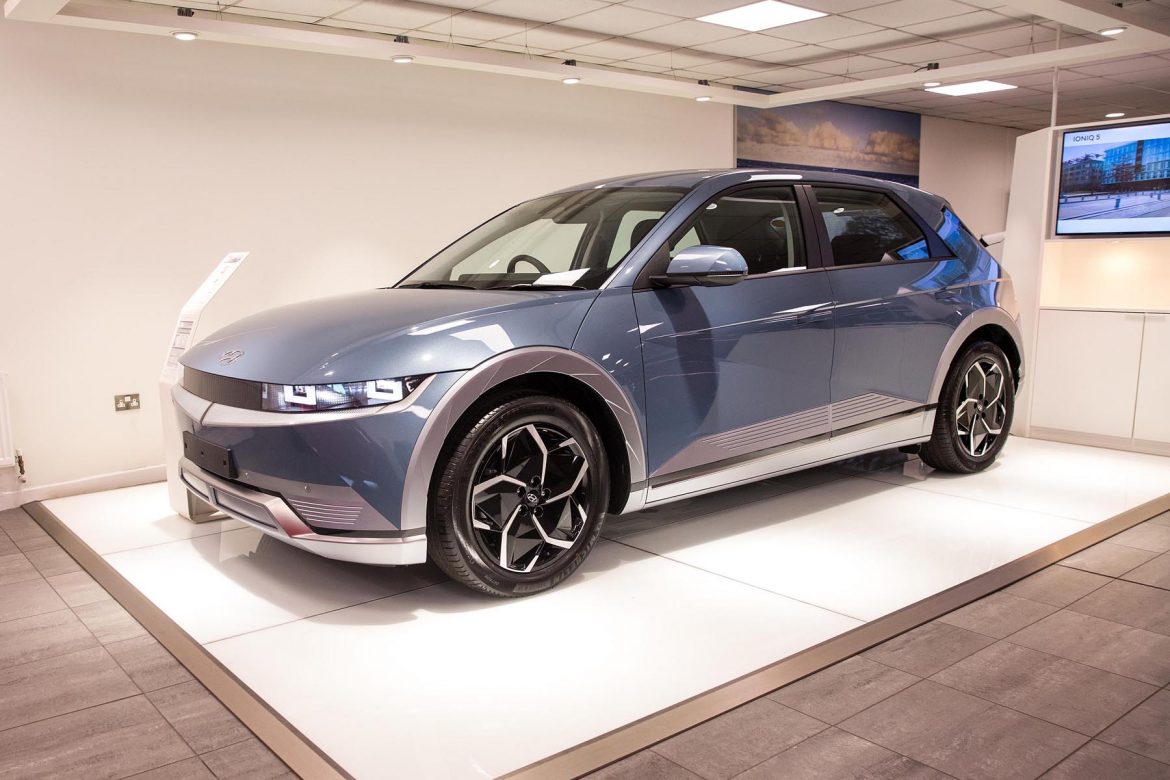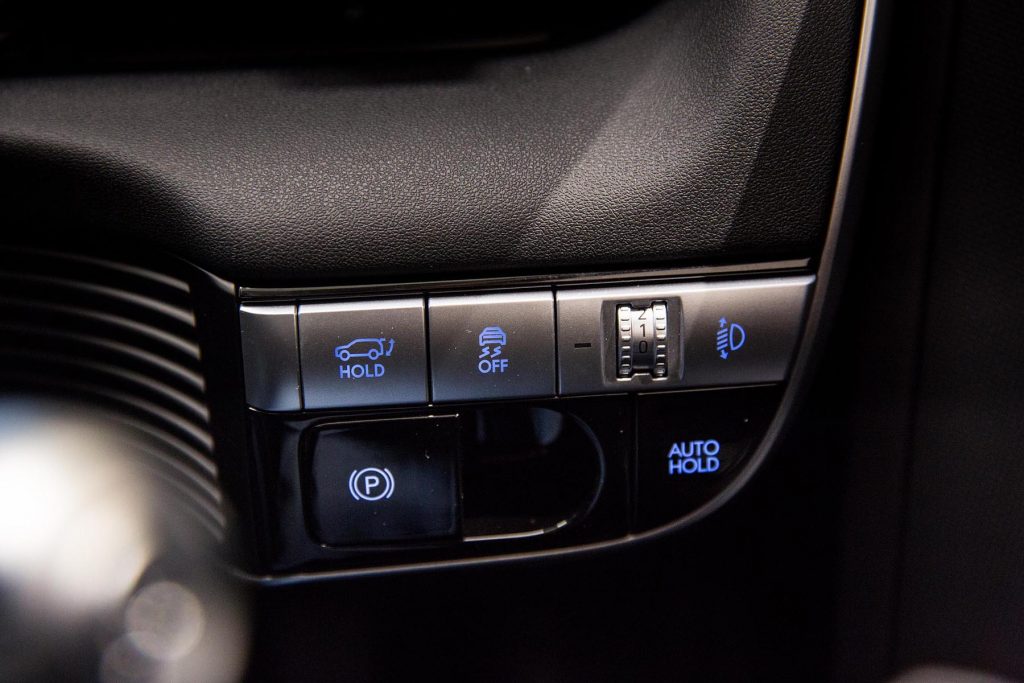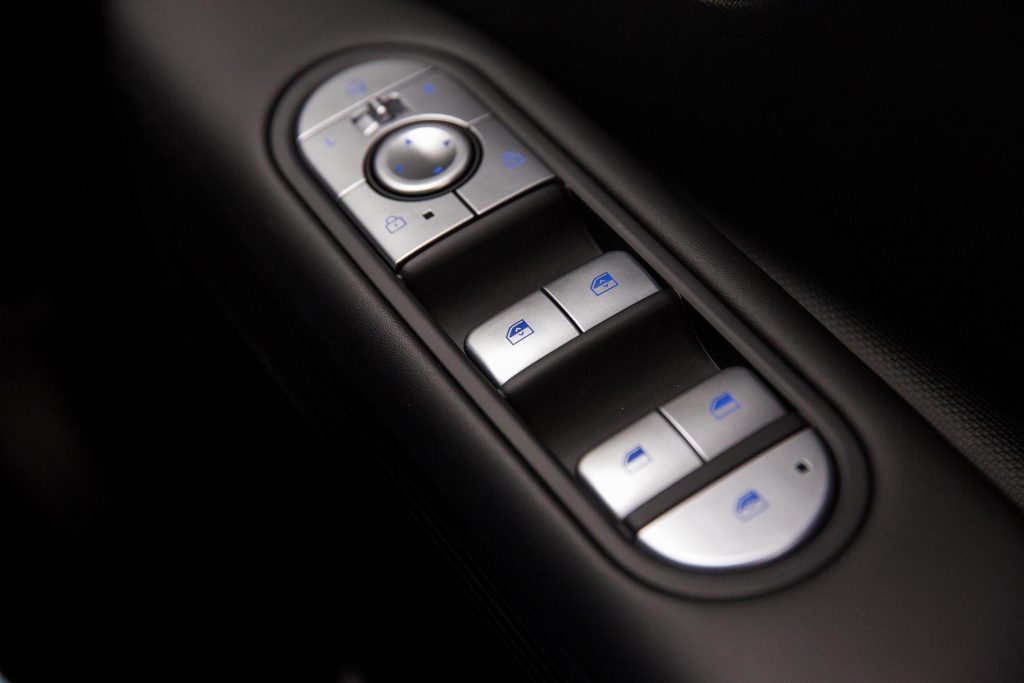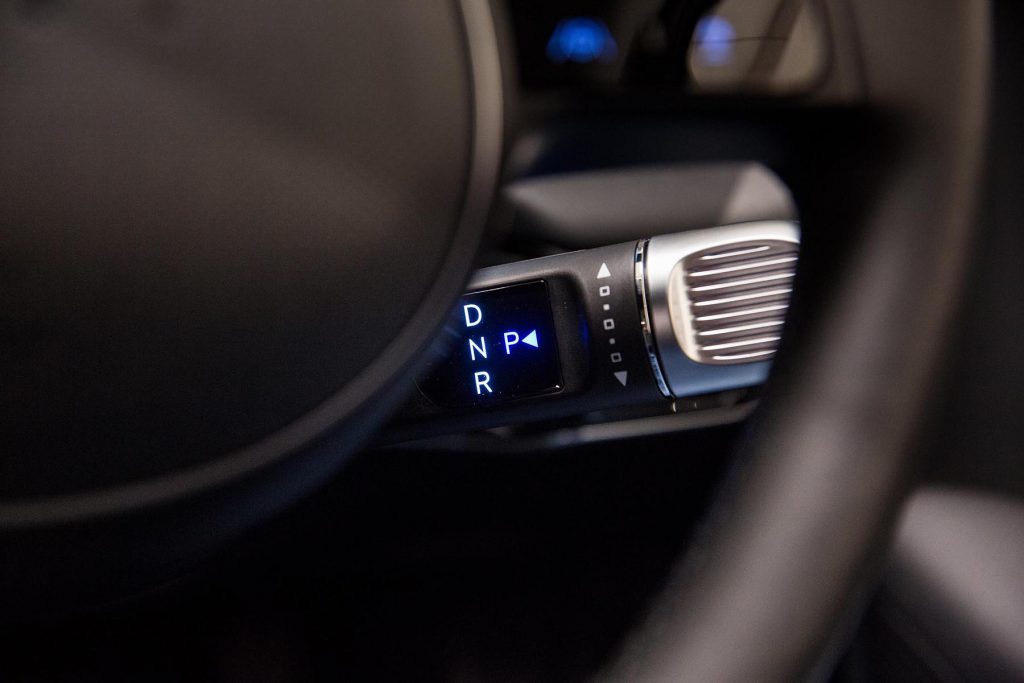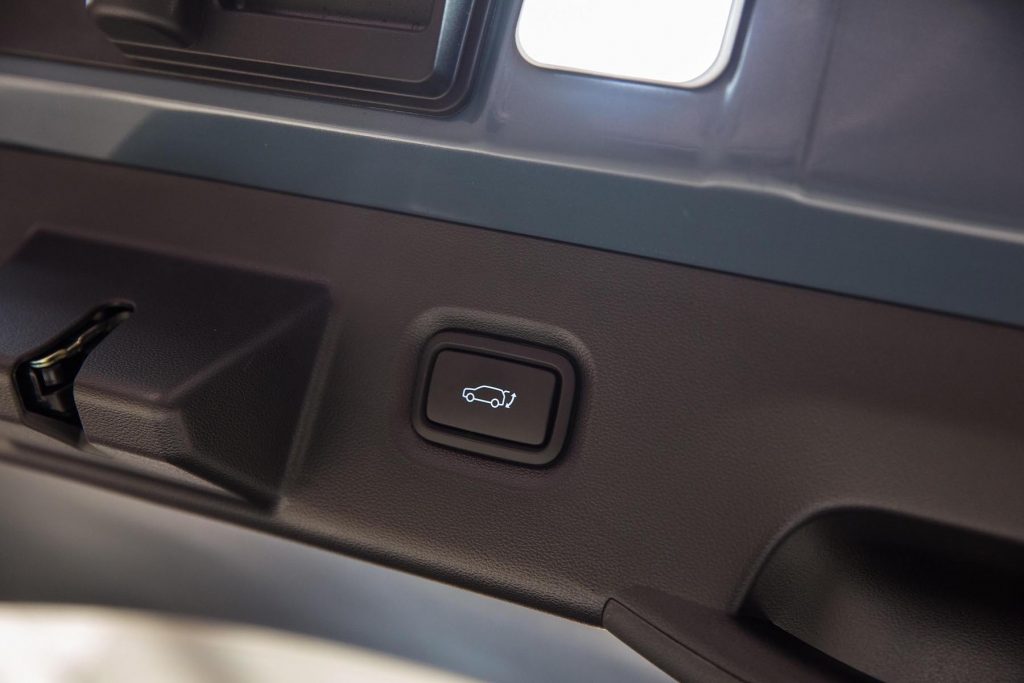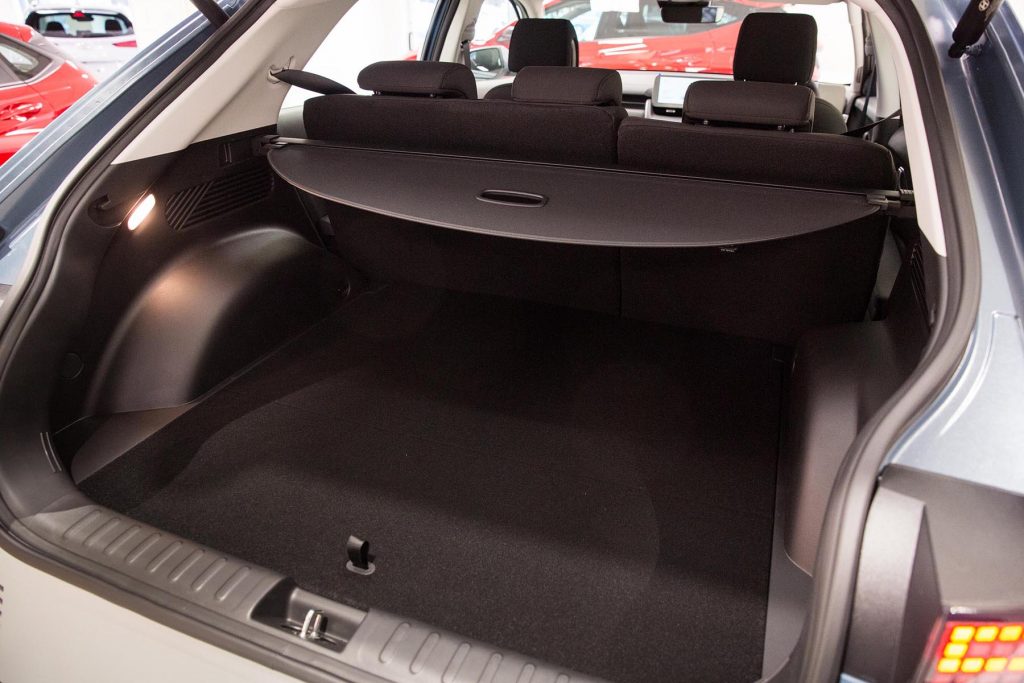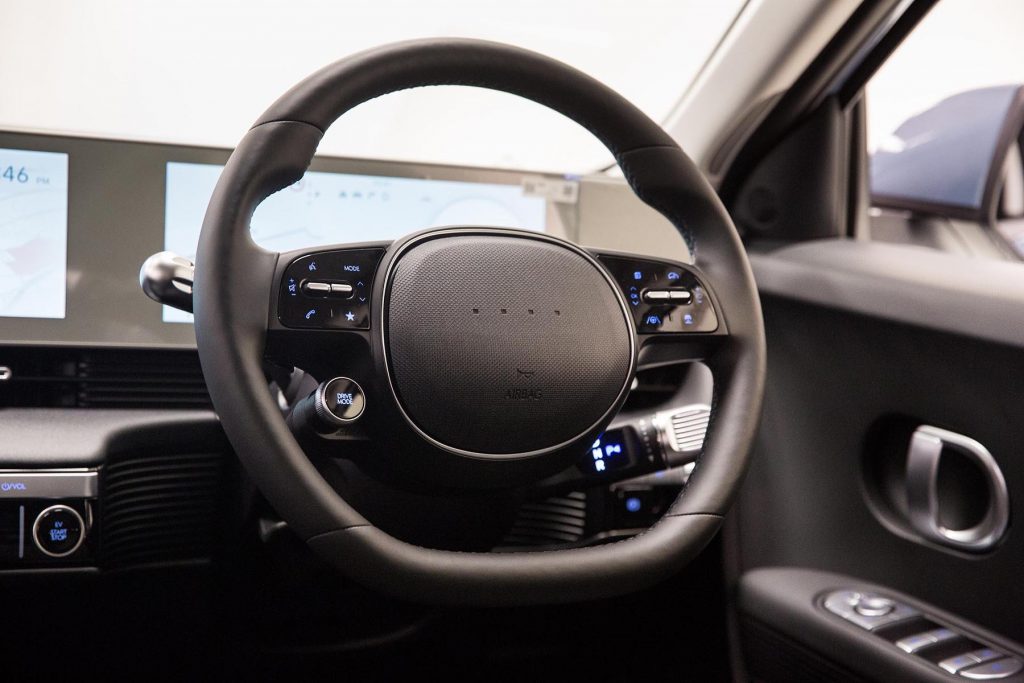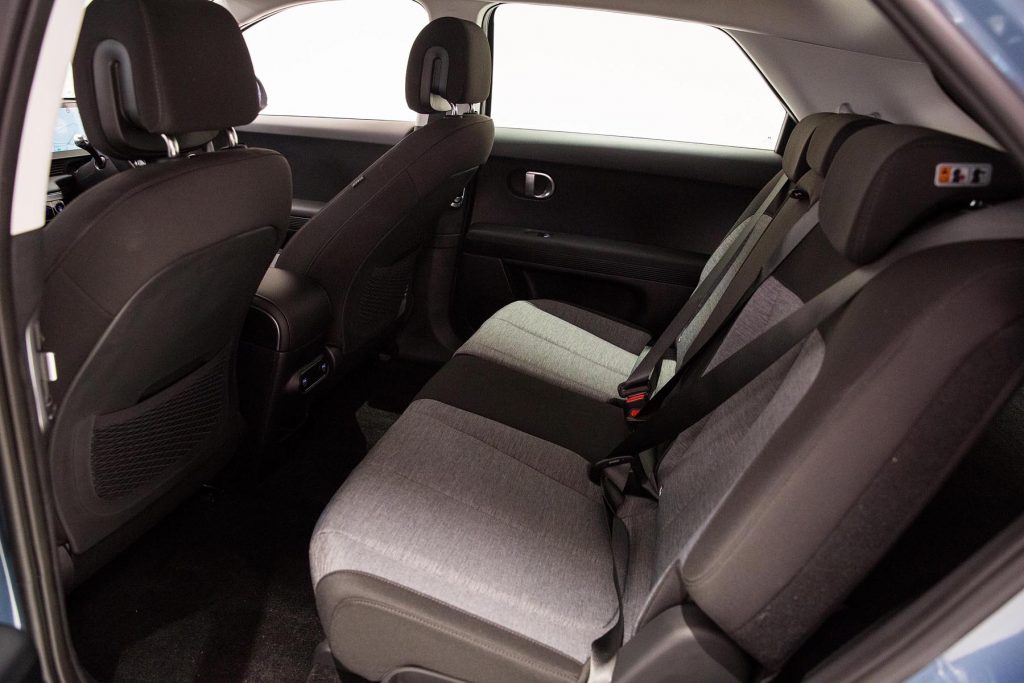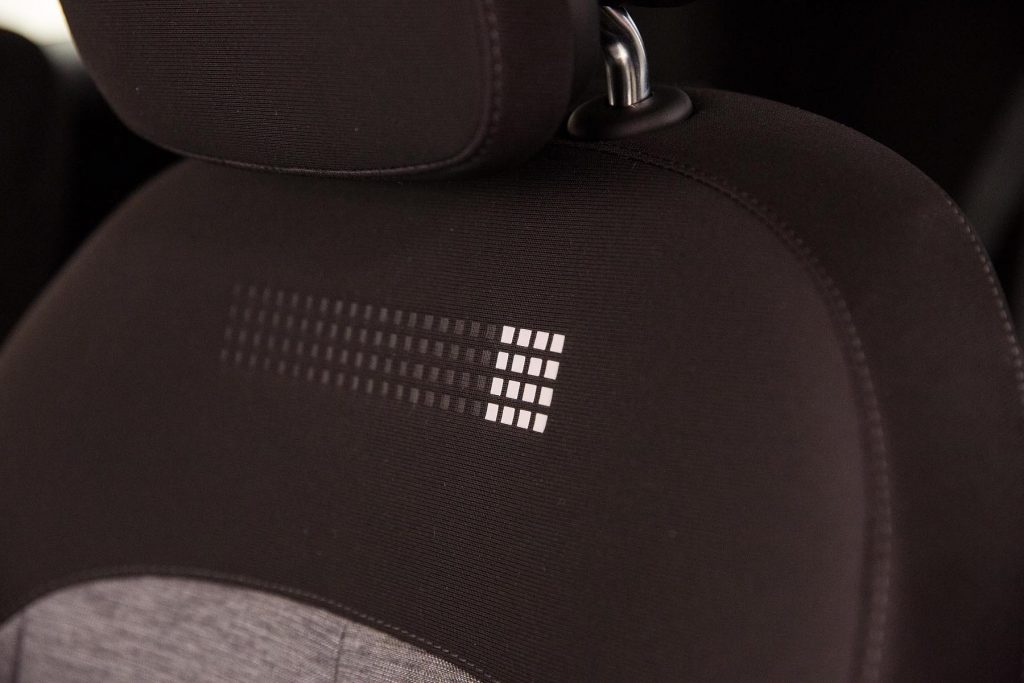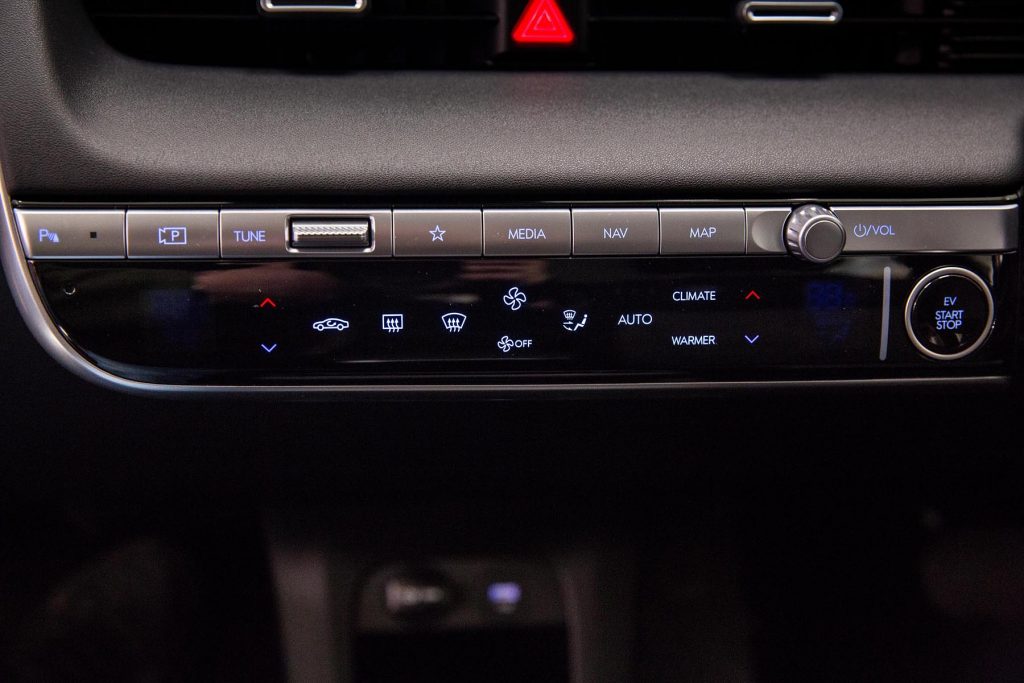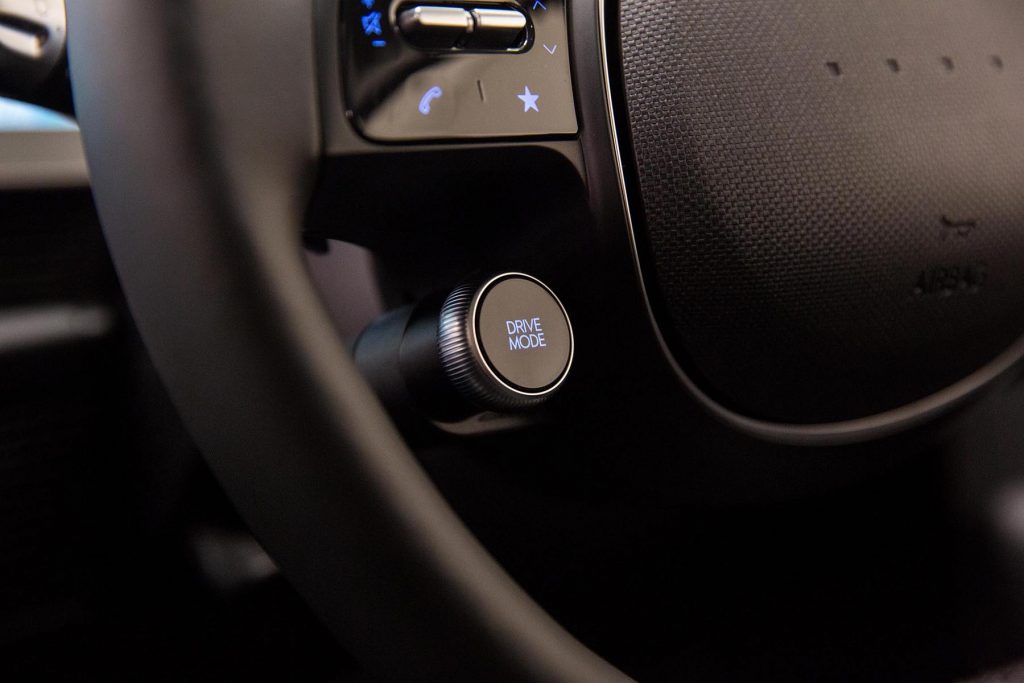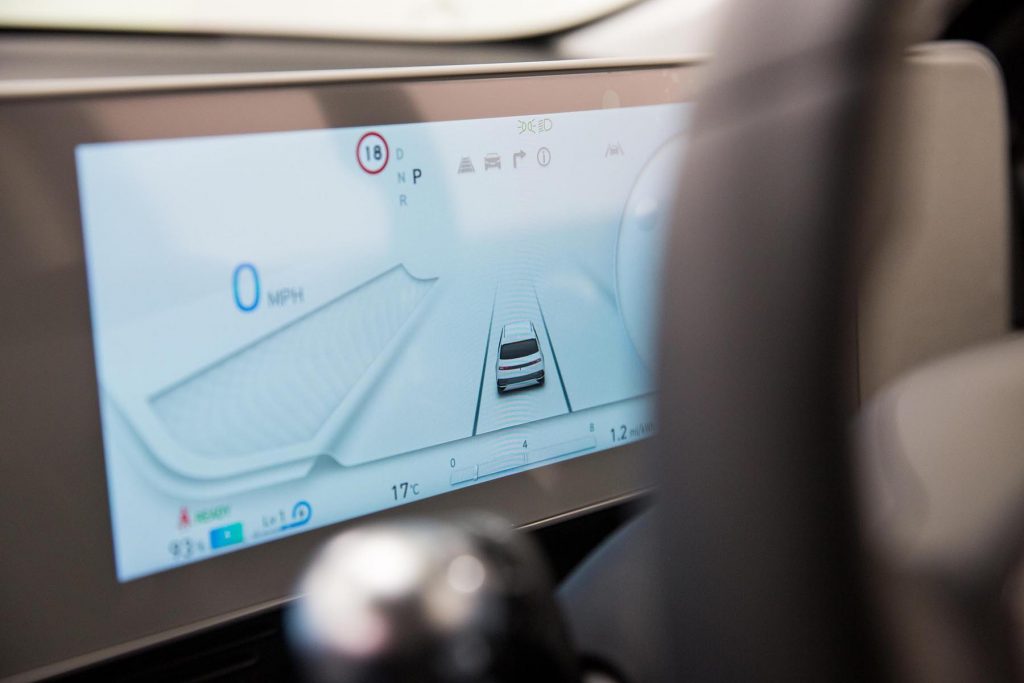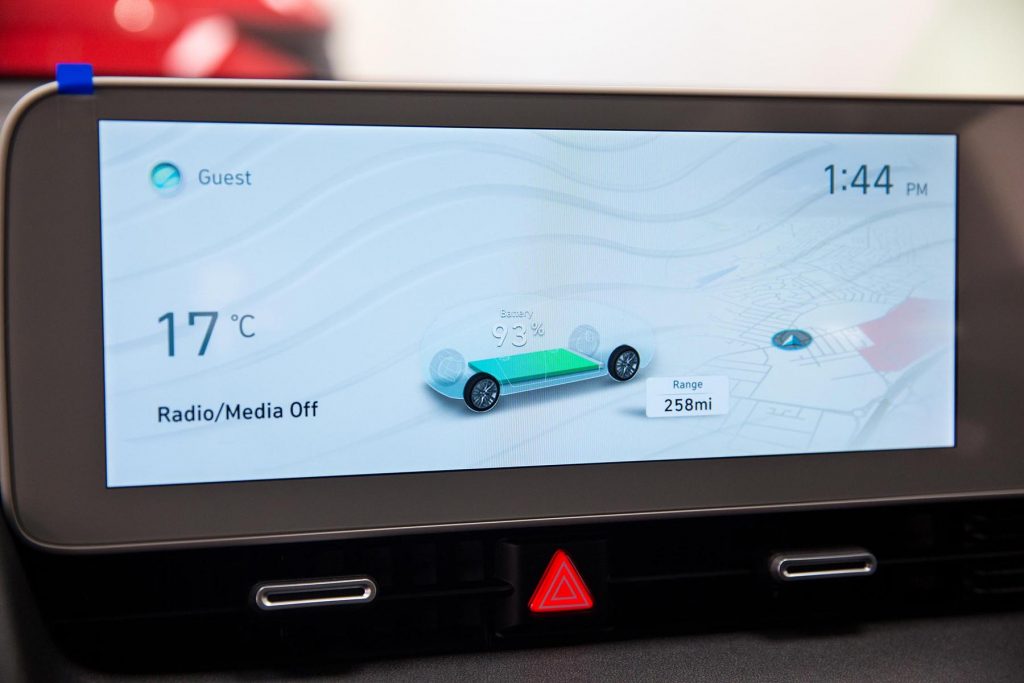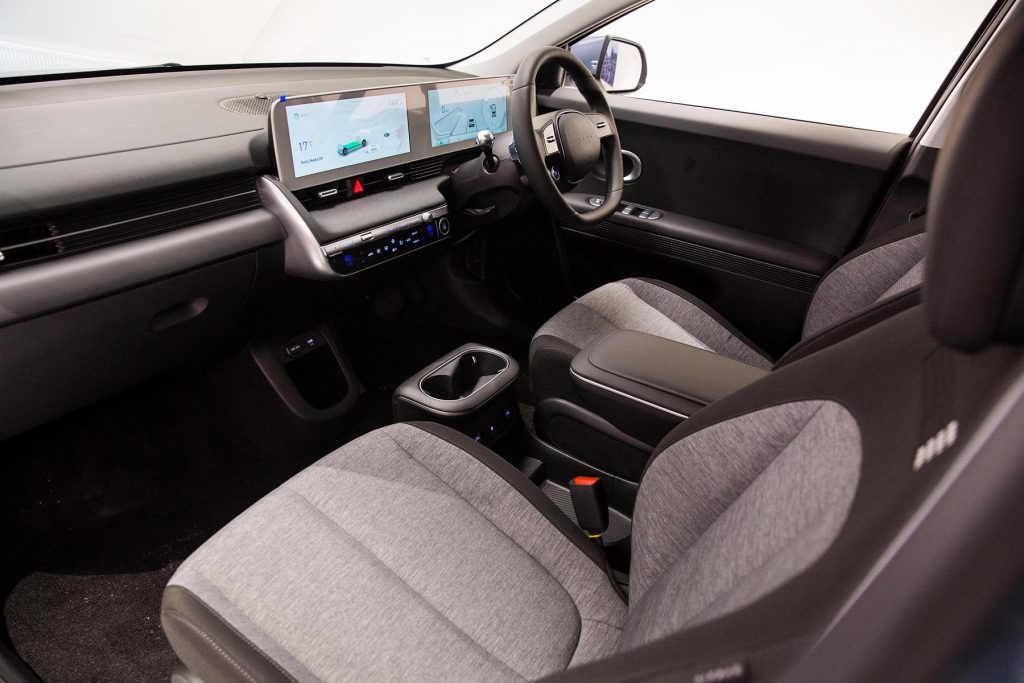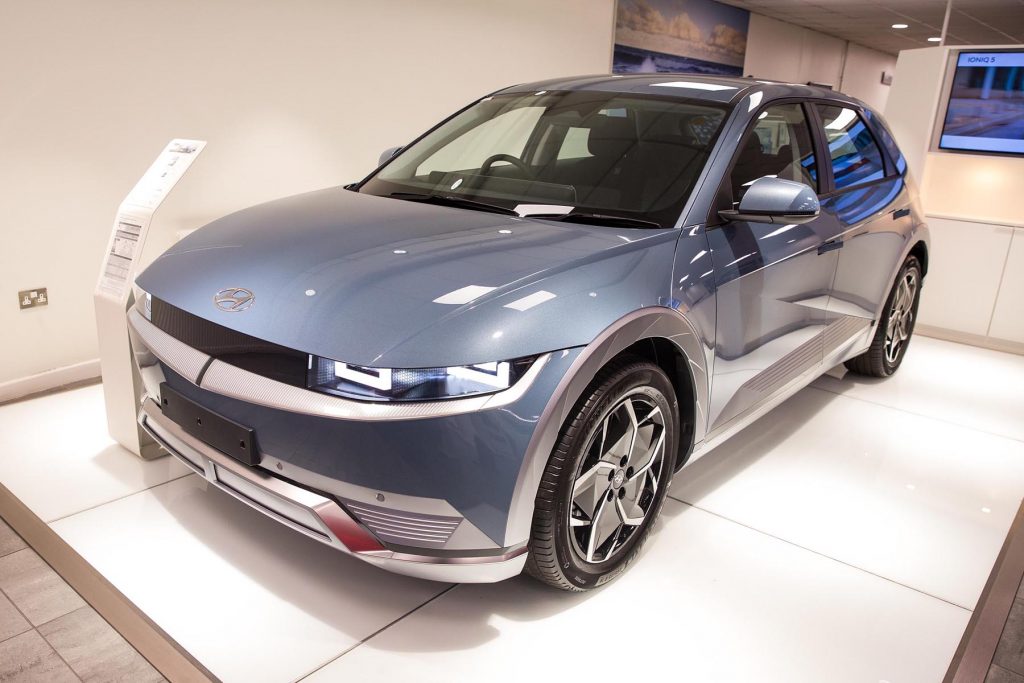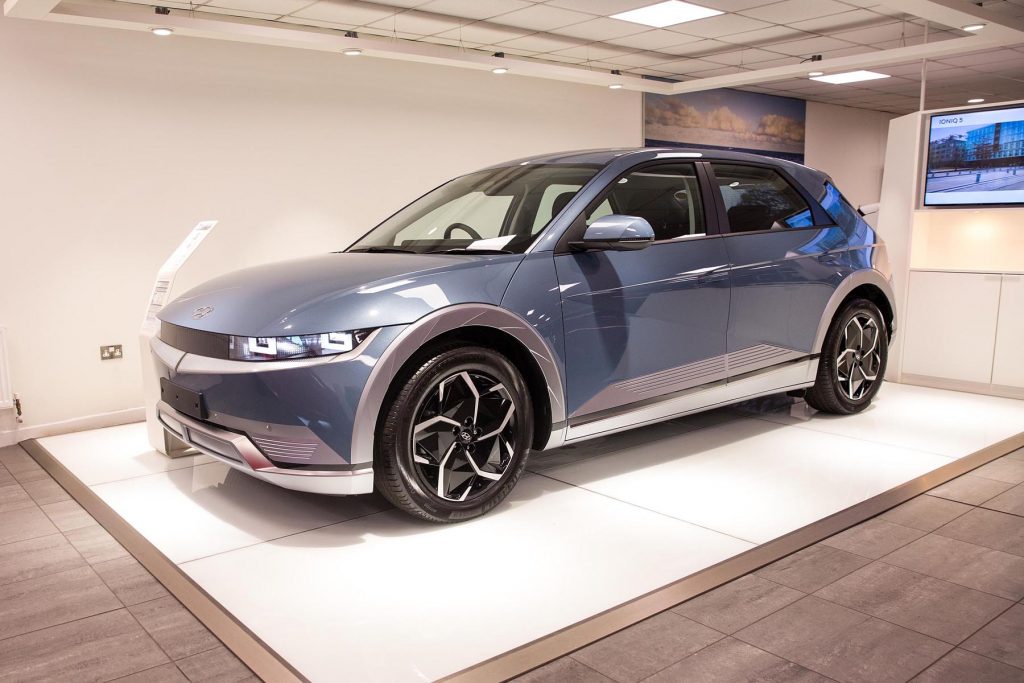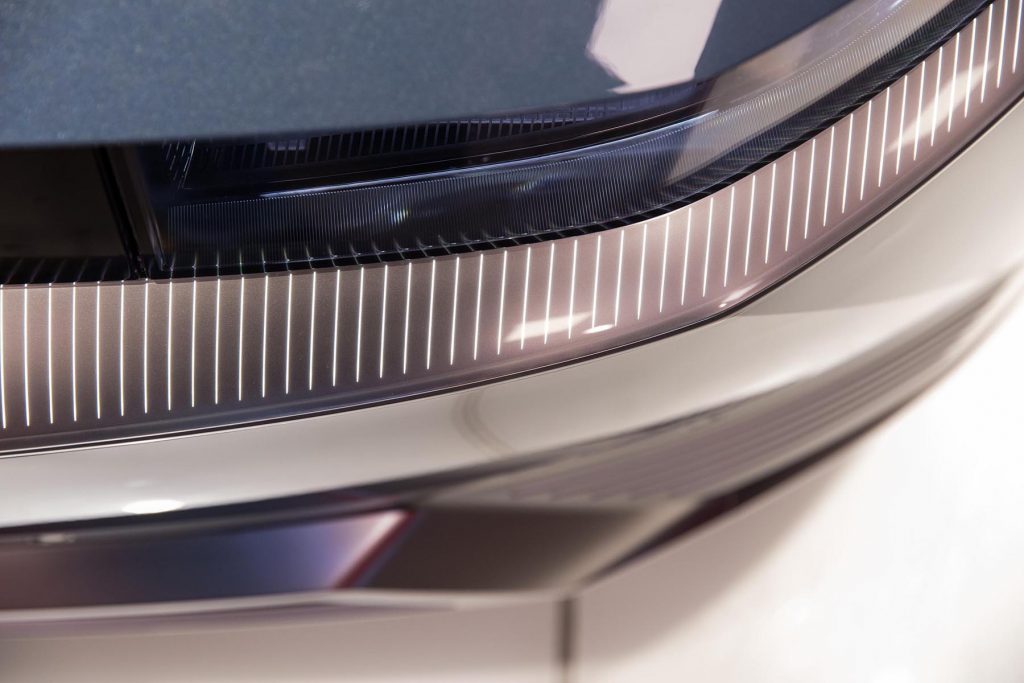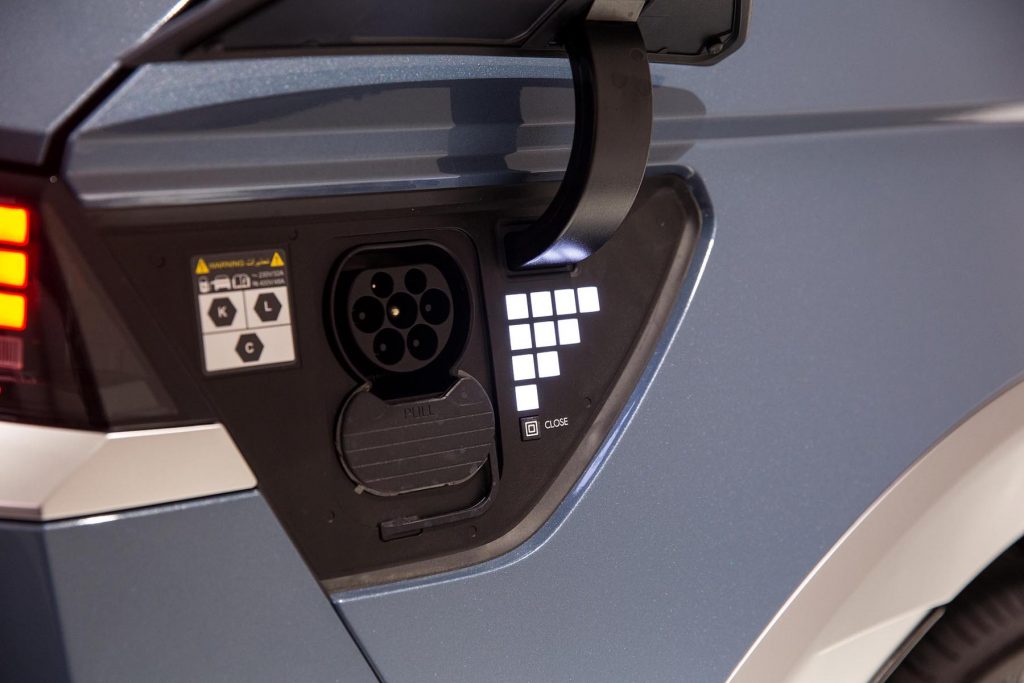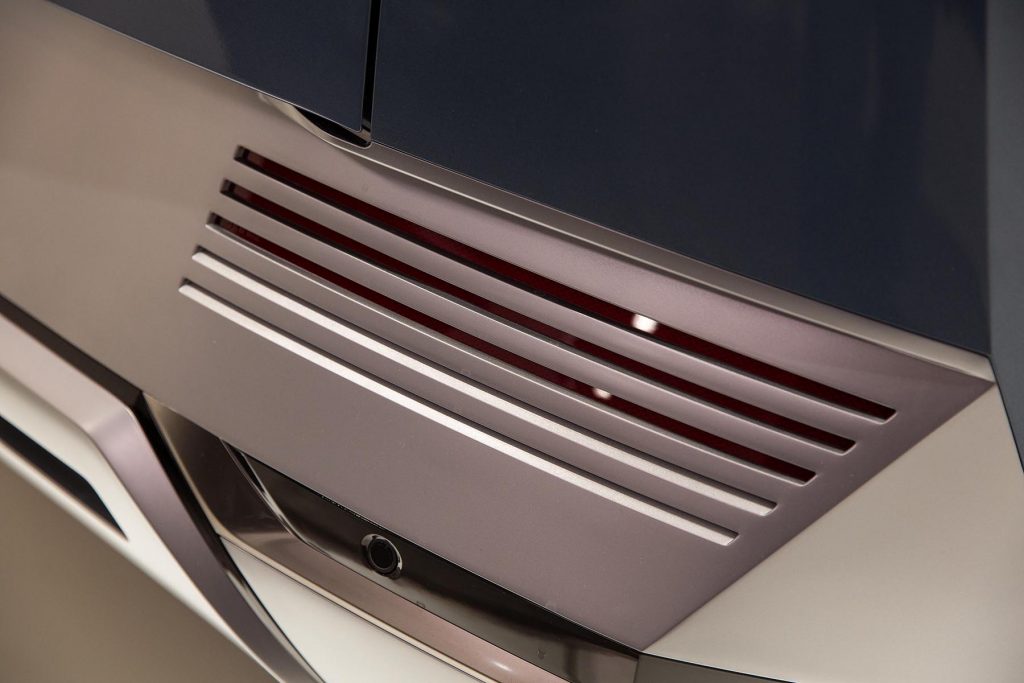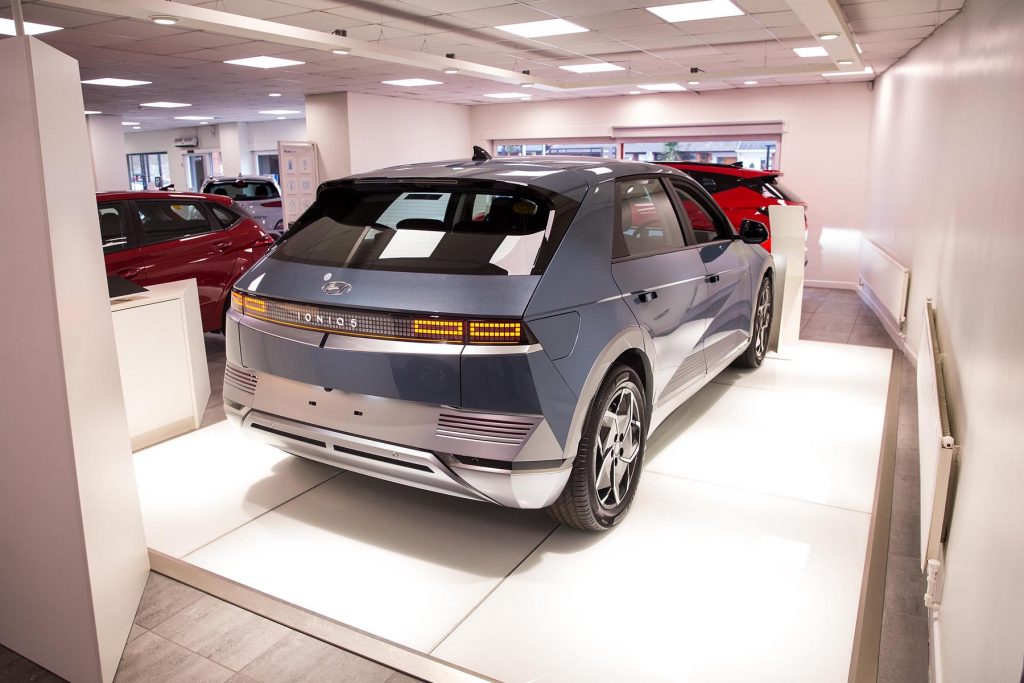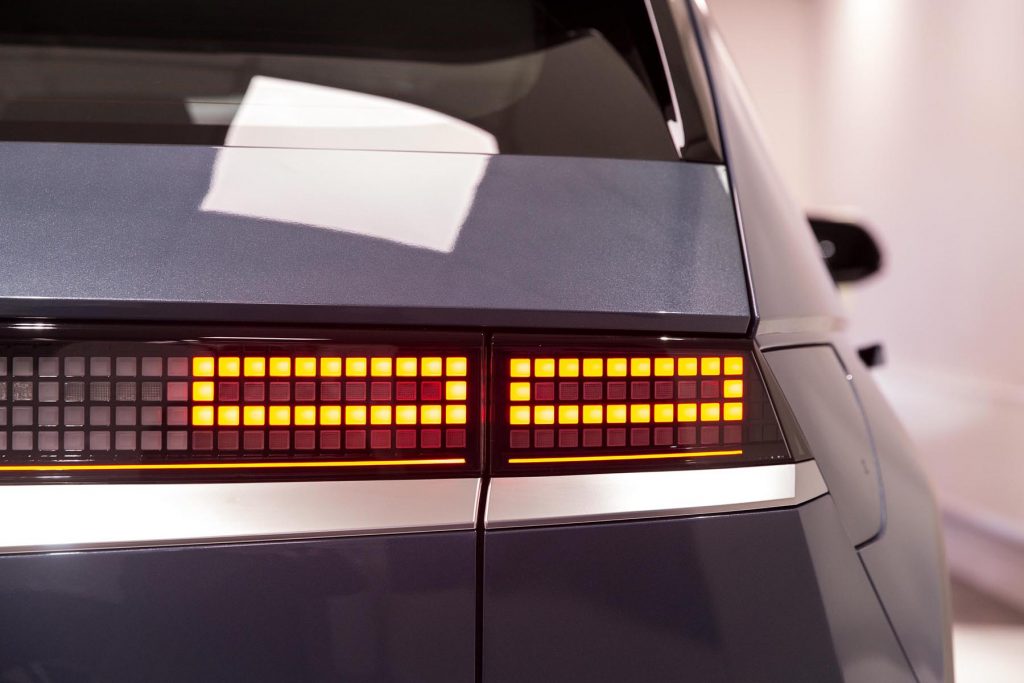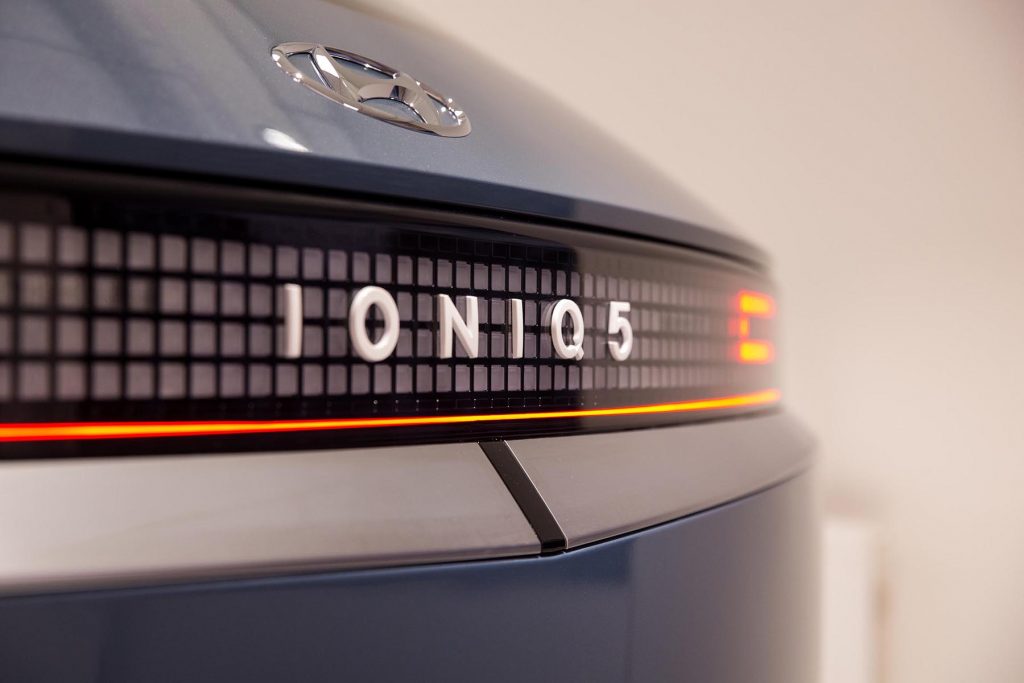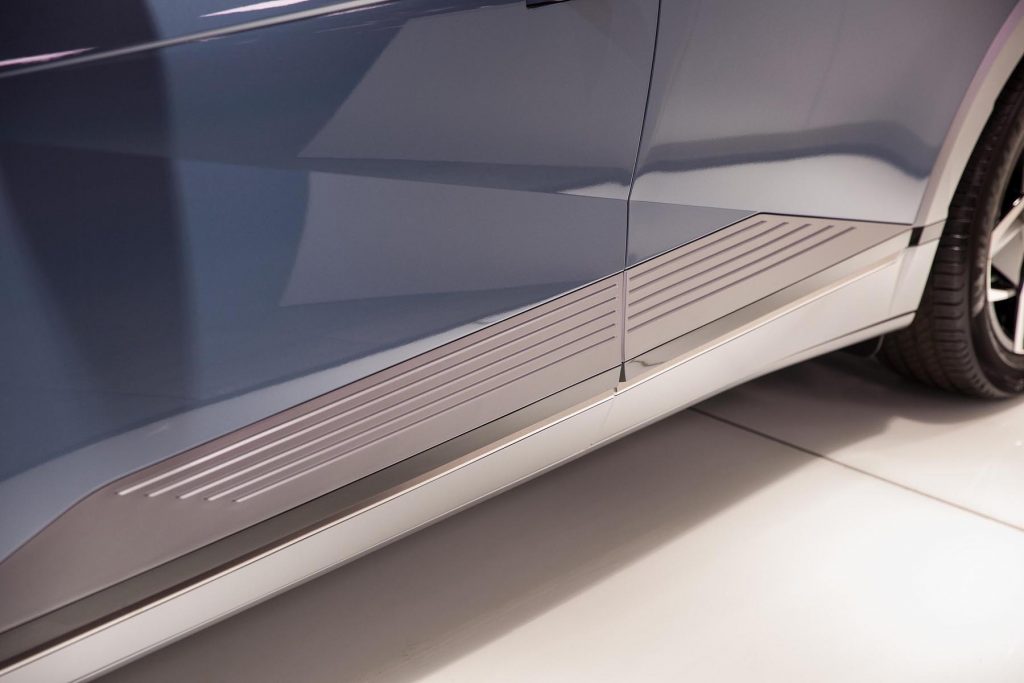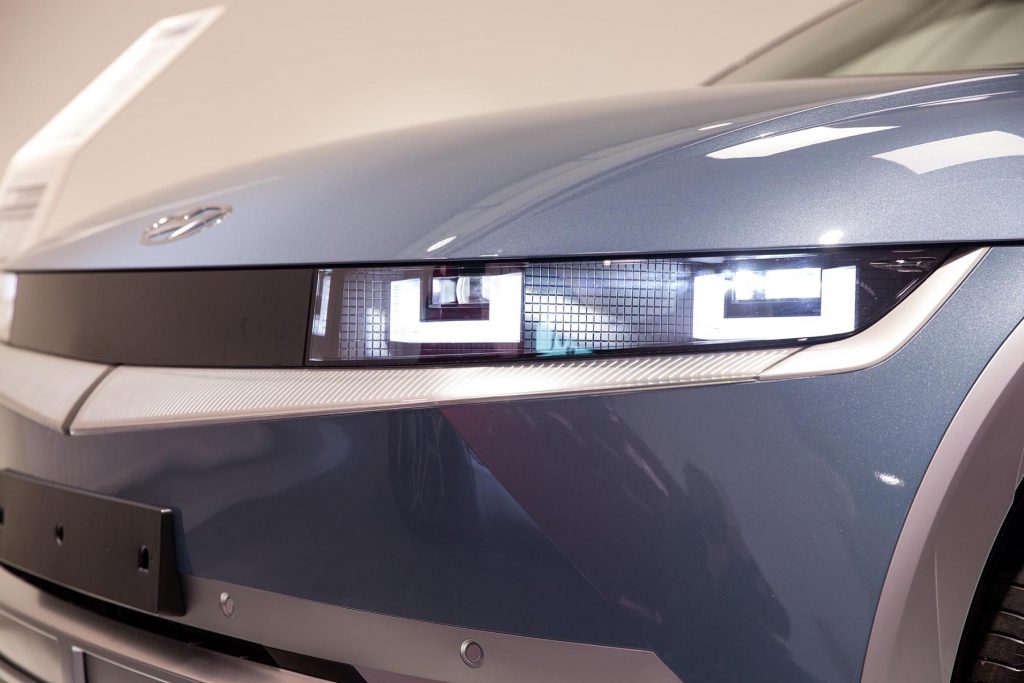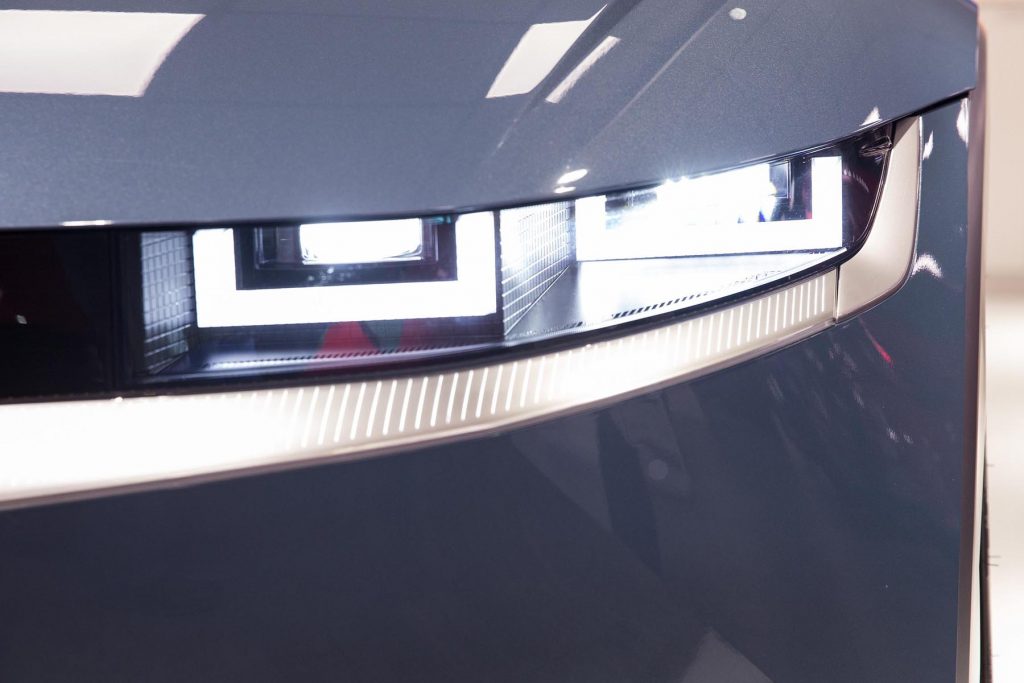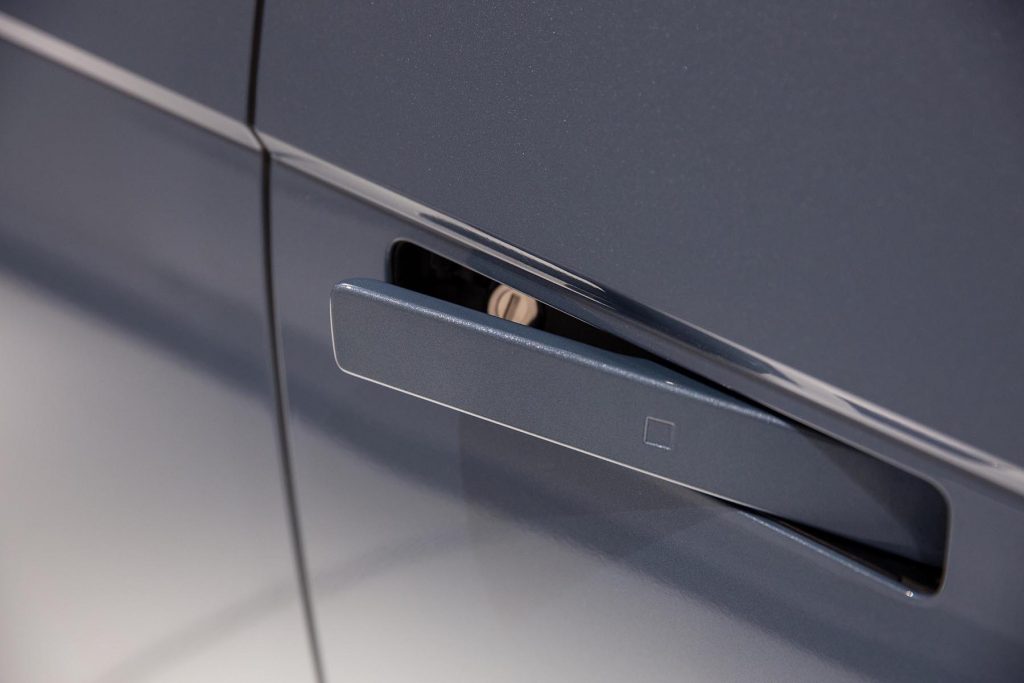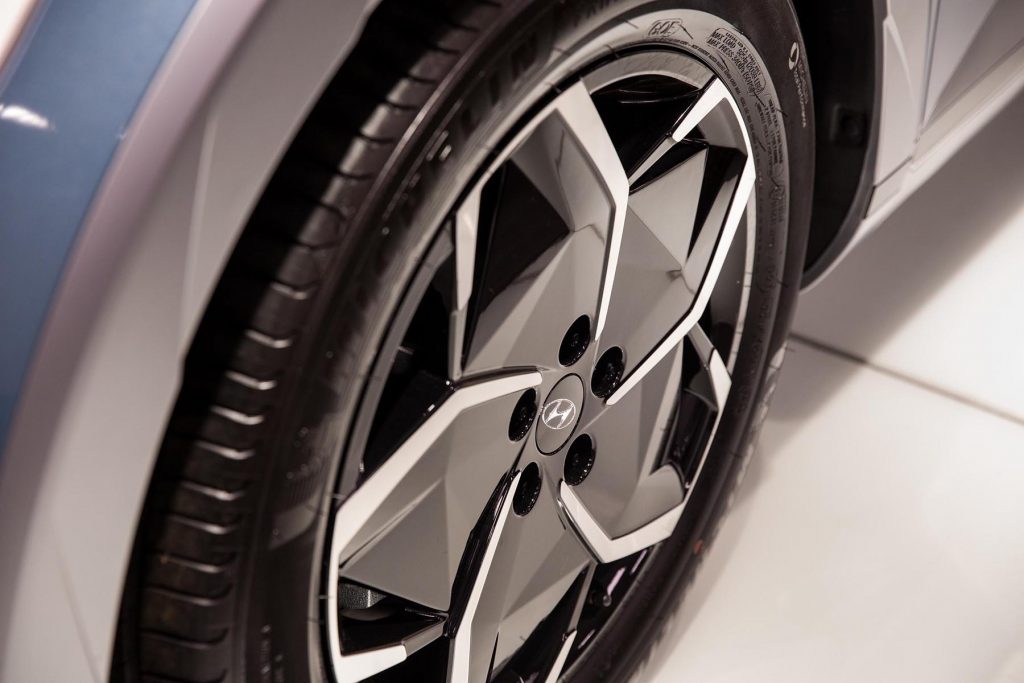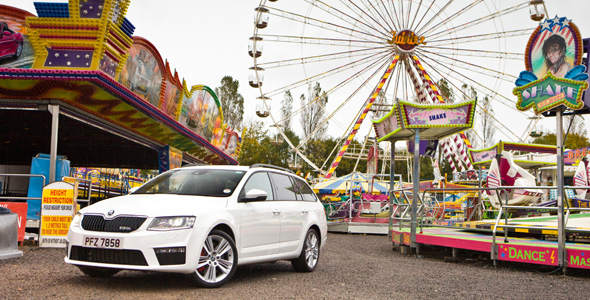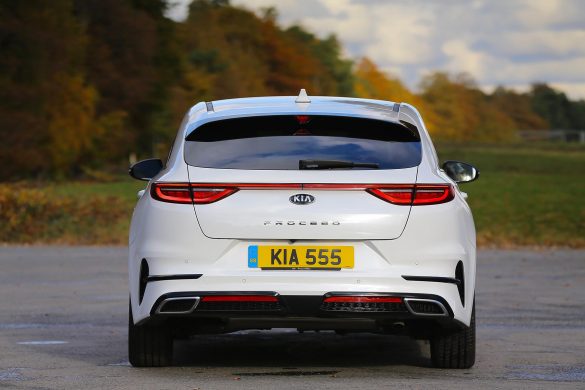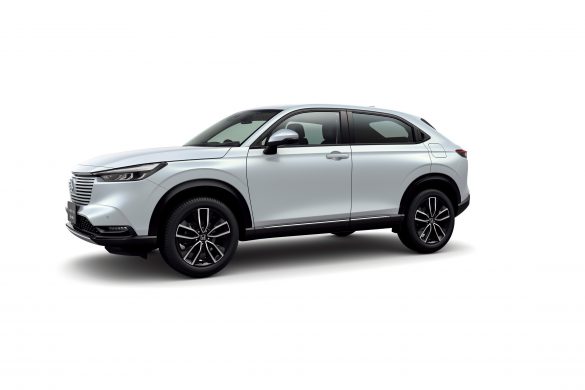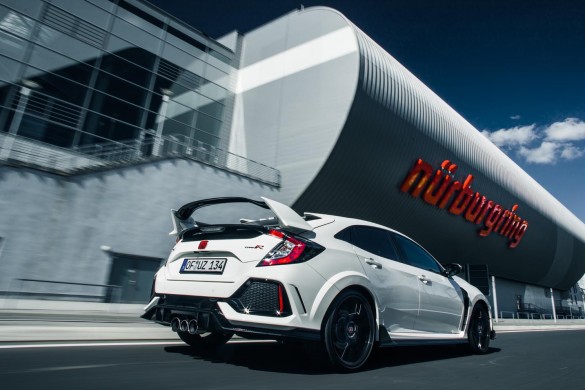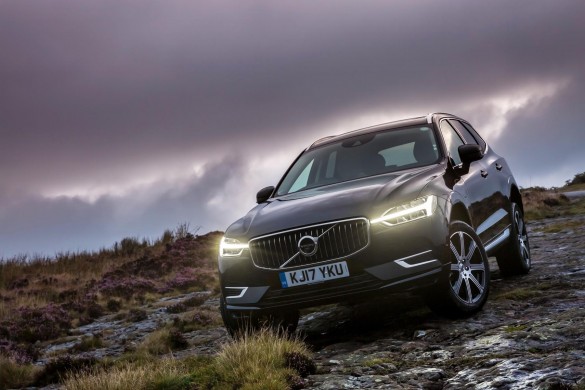It’s easy to be seduced by EV party tricks, whether it be mind blowing instant torque acceleration, self driving trickery or dashboard gaming. So when I took Hyundai’s all-new ground-up EV the IONIQ 5 to Slemish car park, along with coffee machine, toaster and vehicle to load adapter ready to go, I was actually doing this absolutely brilliant all-rounder a disservice.
This is the Project 45, the limited run (3,000 units) launch edition of the IONIQ 5. They are long sold out but they are effectively a fully loaded ‘Ultimate’ trim car with the 305bhp dual motor drive-train and 73kWh battery and around 280 miles of range.
At a shade under £50k expectations are high for Hyundai’s flagship EV, especially as their own Kona Electric scored highly when we reviewed it earlier this year.
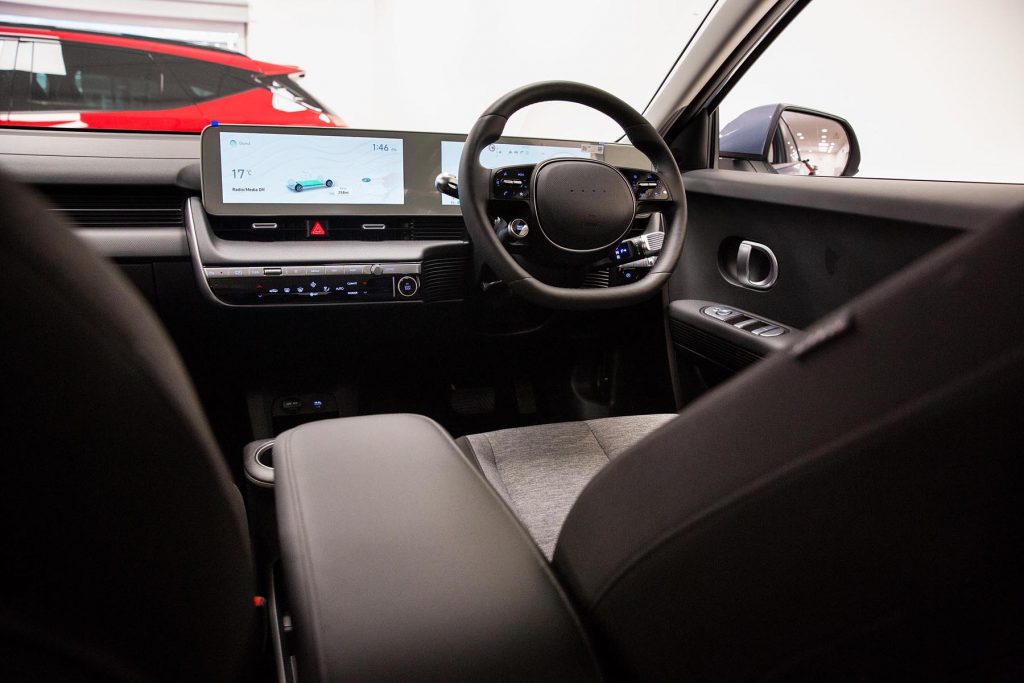
The IONIQ 5 is striking looking. The styling is from a different planet compared to most EVs, not to mention the original ‘white goods’ IONIQ which bares absolutely no relation to this all-new model. The dot matrix tail lights reminiscent of a 1980s computer display; those flat black wheels and the halo square headlights in the flat nosed front end wouldn’t look out of place in a dystopian future flick.
The photos don’t do justice to the dimensions of the IONIQ 5. It’s a significantly sized SUV, with a wheelbase longer than a Range Rover Sport and considerable track giving it a significant square appearance; you won’t miss it parked or on the road. And with this retro-cool styling, that’s a great thing in a world of softer looking EVs.
On the road, and the IONIQ 5 is effortless. Progress is quick in this dual motor, the 0-62 dash quietly dispatched in 5.2 seconds, yet when driving more sensibly the range on a full charge would settle in around the 250 miles mark on test, which is perfectly usable especially in crossing Northern Ireland and back in a day.
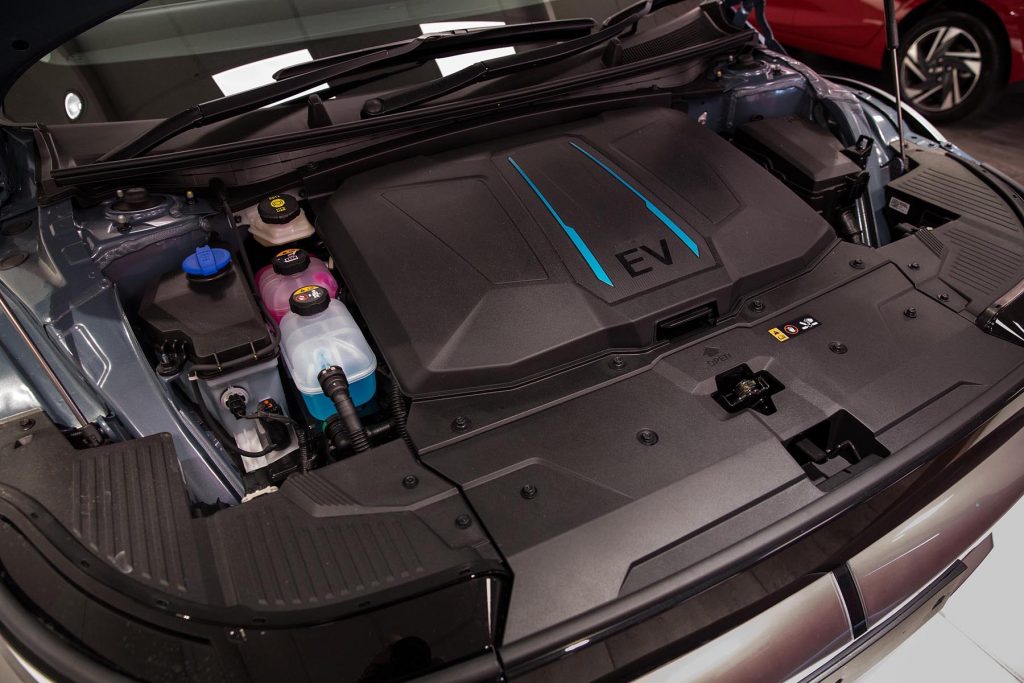
The IONIQ 5 has impeccable road manners on motorway and A-roads, with driver aids such as augmented reality navigation meaning the direction arrows are projected on the heads up display to show lane changes ‘on the lane’ making long journeys even less fatiguing, along with the likes of adaptive cruise and lane centring which were generally unobtrusive.
Despite the 305bhp, of course with the larger 73kWh battery to lug around, this IONIQ 5 tips the scales at 2,000kg and in most normal driving conditions, it feels well enough dampened. Rush the Hyundai on a B-road however, and the suspension can quickly become overwhelmed on broken surfaces, and the weight that was otherwise well hidden suddenly comes to the fore.
Weight is the Achilles’ heel of all EVs due to the battery weight and the IONIQ 5 is no exception, and so lack of compliance is no worse than its rivals, but worth mentioning especially if you are moving from say a considerably lighter piston car.
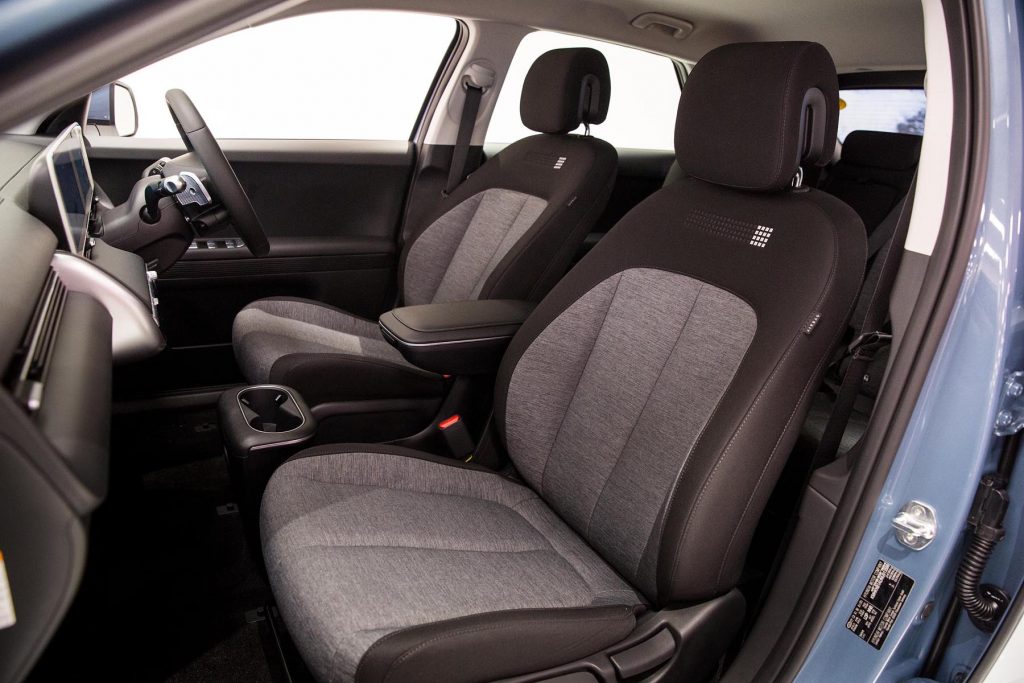
That wheelbase combined with skateboard battery architecture means good news for interior space. The IONIQ 5 will comfortably fit three adults in the back with great legroom, not to mention the ability for the rear passengers to be able to recline and move their seats back at the flick of a switch.
Throughout the whole interior you can tell that every engineering opportunity has been capitalised on to make use of the significant space and tunnel-free flat floor. The front seats fold near flat at one touch of a button, a leg extension folding up to greet you a la lazy-boy sofa, perhaps for a snooze at the charging station.
The centre console is another great touch. It’s on runners and you can slide the whole unit (which includes the cup holders, wireless charging pad and armrest) backwards and forwards to find the perfect position. There’s considerable flat floor carpet space in front of the console, adding to the airy feeling of the cabin.
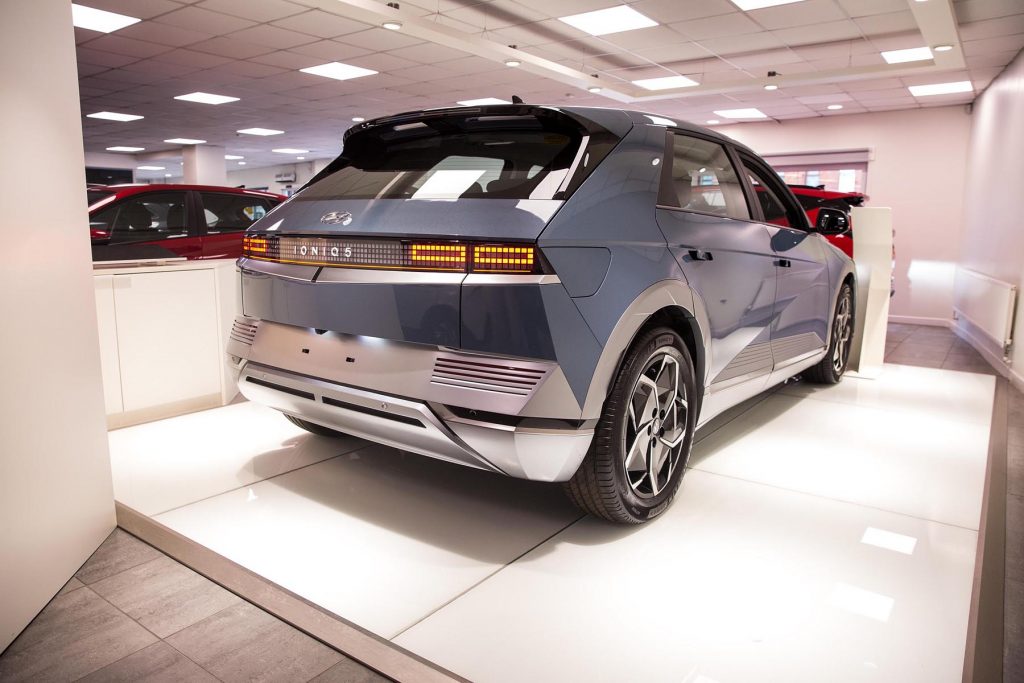
On that note, our test car didn’t have a panoramic roof, in lieu of the Project 45 only solar roof which can top up charge to the tune of around 8 miles per day at best. I think a glass roof would be my preference here.
The infotainment and controls are well laid out. Two large displays in one panel, reminiscent of Mercedes latest sit in front of the driver and in the centre. Apple Carplay and Android Auto are both supported (wired only), with graphics large and clear to understand. Thankfully there is a reasonable button count for both climate and hifi so delving into the menus is more reserved for the likes of setup, nav and driving information.
The two spoke steering wheel means a clearer view of both your feet and the displays more of the time, although the steering stalks, especially the drive selector are surprisingly cheap feeling which is quite out of place in what is generally a high quality environment. Sounds are superb from the Bose system, aided by the well damped cabin that in driving seemed to have minimal road and wind noise at speed.
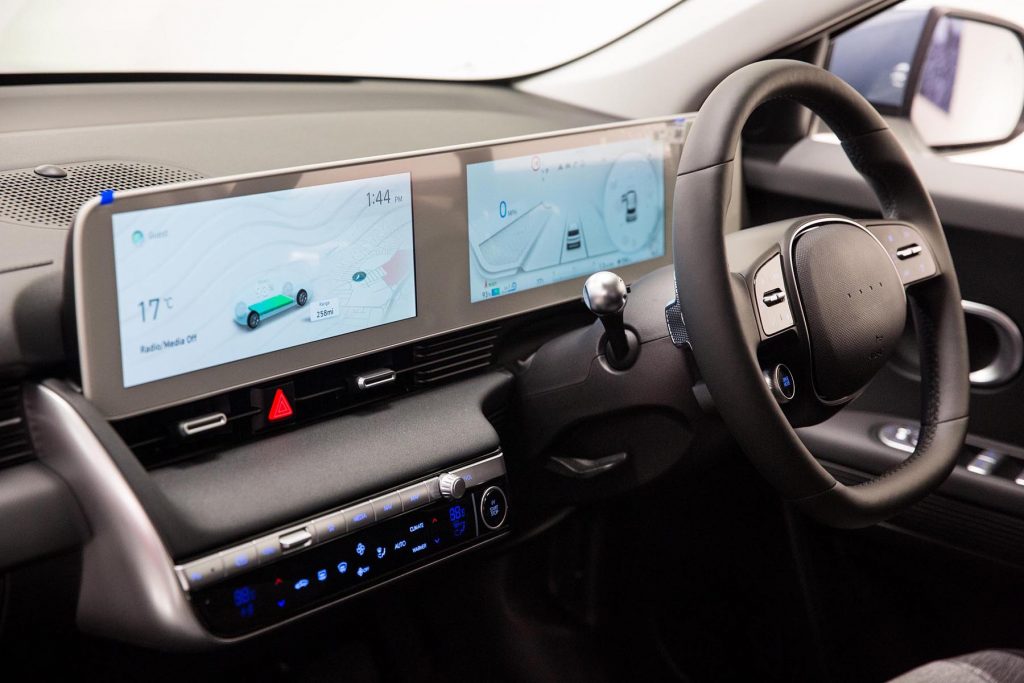
The Competition – the Ford Mustang Mach-E, VW ID4, Skoda Enyaq, and even its Korean sibling, the Kia EV6 are both similarly priced and well reviewed.
In the space of a year, there’s now a lot of competition in the £40-50k EV space and Hyundai know it, filling the IONIQ 5 with useful tech, superb ergonomics and a funky design to set it apart. I’d have no hesitation in recommending one.
Fact File for model tested:
Make : Hyundai
Model : IONIQ 5
Trim : Project 45
Engine : 73kW electric motor
Gearbox : Automatic
Cost : £48,000
Words & Photos: GRAHAM BAALHAM-CURRY
images must not be used in any way without prior written consent of the
photographer
